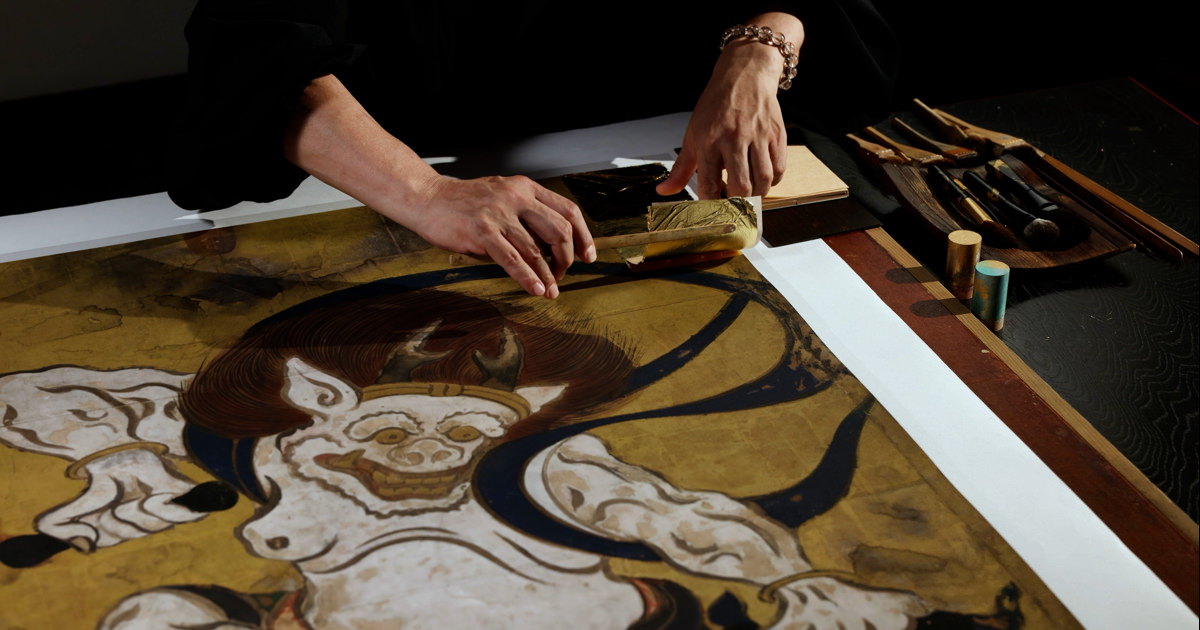Flowers and Birds
High-resolution facsimiles
- Material
- printed on washi paper
- Period of creation
- Tsuzuri Project Stage 4 2010–2011
- Recipient
- Kenninji Temple
Original
- Cultural property designation
- Important Cultural Property
- Artist
- Kaiho Yusho
- Historical era
- Azuchi-Momoyama (16th century)
- Material
- ink on washi paper
- Medium
- Four sliding doors
Eight sliding doors - Size
- (From the west side) 2 doors: Each H188.0 × W111.0 cm
1 door: H190.0 × W225.0 cm
1 door: H190.0 × W81.5 cm
4 doors: Each H187.0 × W133.0 cm - Collection
- Kenninji Temple
Description
These eight sliding doors adorn the drawing room at Kenninji and are part of the 50 panels of the Wall and Screen Painting of Hojo hall of Kenninji (an important cultural property) painted by Kaiho Yusho. Yusho painted these doors, which are regarded as Japan‘s most renowned series of ink and water paintings, as part of the restoration work of Kenninji during the early modern era. The two large and small wall panels affixed to the west side and the two sliding doors feature two pine trees sprouting from the bulging ground beneath it where a peacock stands, seemingly poised to take off into the air. The four sliding doors on the south side form a continuous composition portraying a pair of crested myna perching on a plum tree showing a touch of spring, and three waterbirds swimming in a lake.
Kaiho Yusho‘s brush strokes embrace elegance and boldness in depicting the finest of the sliding panels in the abbot‘s chambers of Kenninji.
*In order to view videos, it is necessary to consent to the use of cookies by our website.
If the videos are not displayed, please click the “Cookie Settings” and accept cookies.




